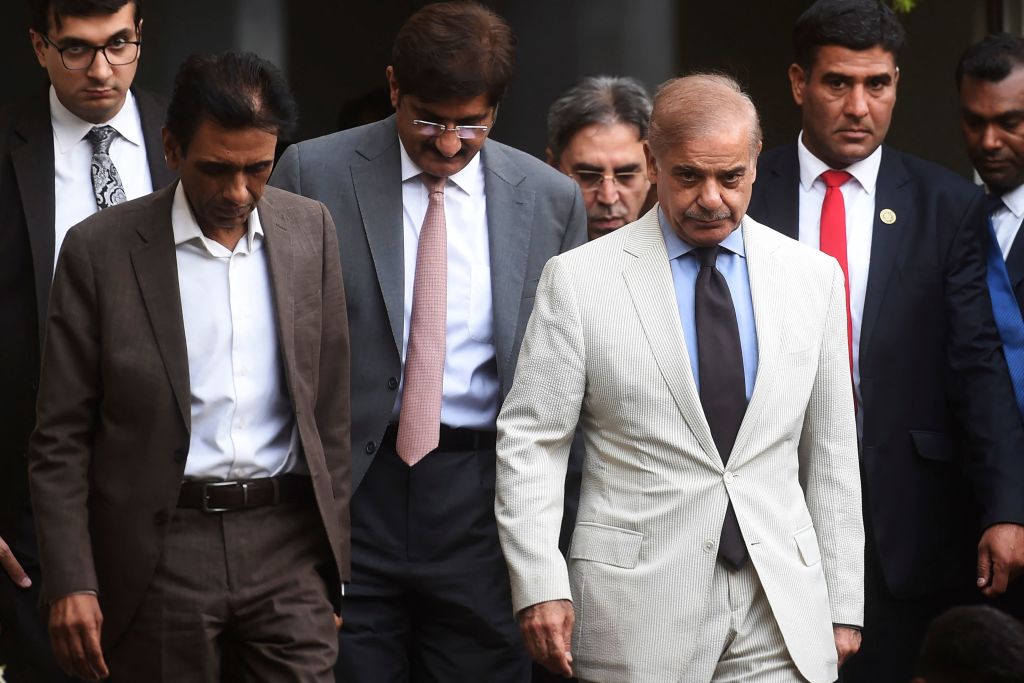
Following weeks of political turmoil, Pakistan’s Prime Minister Imran Khan is out, Shehbaz Sharif is in, and the country’s streak of political dysfunction continues. No elected Prime Minister has ever served a full five-year term, though Khan is the first to be removed by a vote of no confidence in Parliament. This sad statistic is explained by constant infighting among the country’s political factions, a culture of official corruption, and frequent interventions of military leaders determined to protect their prerogatives.
Many of those who voted for the charismatic Khan in 2018 hoped he might end these cycles of failure. He came from neither the Bhutto nor Sharif factions, the dynasties that had dominated Pakistan’s modern politics. His status as a genuine political outsider gave credibility to his campaign pledge to attack the country’s endemic graft. He also appeared to have the blessing of the perpetually meddlesome military. But four years later, Khan has fallen victim to tough economic times. Inflation, including for food, is hitting record highs. Unemployment is high; debts and deficits are rising.
But his increasingly controversial foreign policy also played a big role in his ouster by helping to poison his relationship with Pakistan’s military brass. The generals have long signaled that good working relationships with both China and the U.S. are critical to Pakistan’s security. They know that China is the more reliable long-term ally against India, Pakistan’s chief rival, and that Chinese investment remains crucial for the future of Pakistan’s economy. But they also know that the U.S. and E.U. are Pakistan’s lead export markets, and that good relations with the International Monetary Fund, in which the U.S. plays a crucial role, are important for Pakistan’s economic well-being.
Imran Khan appeared headed in another direction. In recent weeks, he tried to boost his popularity by playing to the anti-American hostility of his core voters. He set off alarm bells in Washington and among Pakistan’s generals with a visit to Vladimir Putin in Moscow on the first day of Russia’s invasion of Ukraine. That trip was long-planned, and its purpose was to secure badly needed Russian natural gas for Pakistan’s economy. But Khan has done little to discourage the suspicion that he’s a fan of Russia’s President. His government then abstained from voting to condemn Russia’s invasion.
When his parliamentary coalition began to fracture, and it appeared the military supported a bid by lawmakers to oust him via a vote of no confidence, Khan blamed a conspiracy led by “the West,” by which he surely meant the U.S., to push him aside in favor of someone Washington likes better. Now he’s out.
The new Prime Minister, Shehbaz Sharif, represents a reversion to the “old Pakistan,” according to Khan and his supporters. Sharif is the 70-year-old younger brother of former PM Nawaz Sharif. He’s also a veteran politician and a former chief minister of Punjab. His primary task will be to try to restore the country’s economic stability at a time when broader threats to the global economy will continue to create obstacles. But this new government will also return foreign policy to the “old Pakistan” model by working hard at the increasingly daunting task of keeping good relations with both America and China.
More Must-Reads from TIME
- Cybersecurity Experts Are Sounding the Alarm on DOGE
- Meet the 2025 Women of the Year
- The Harsh Truth About Disability Inclusion
- Why Do More Young Adults Have Cancer?
- Colman Domingo Leads With Radical Love
- How to Get Better at Doing Things Alone
- Michelle Zauner Stares Down the Darkness
Contact us at letters@time.com